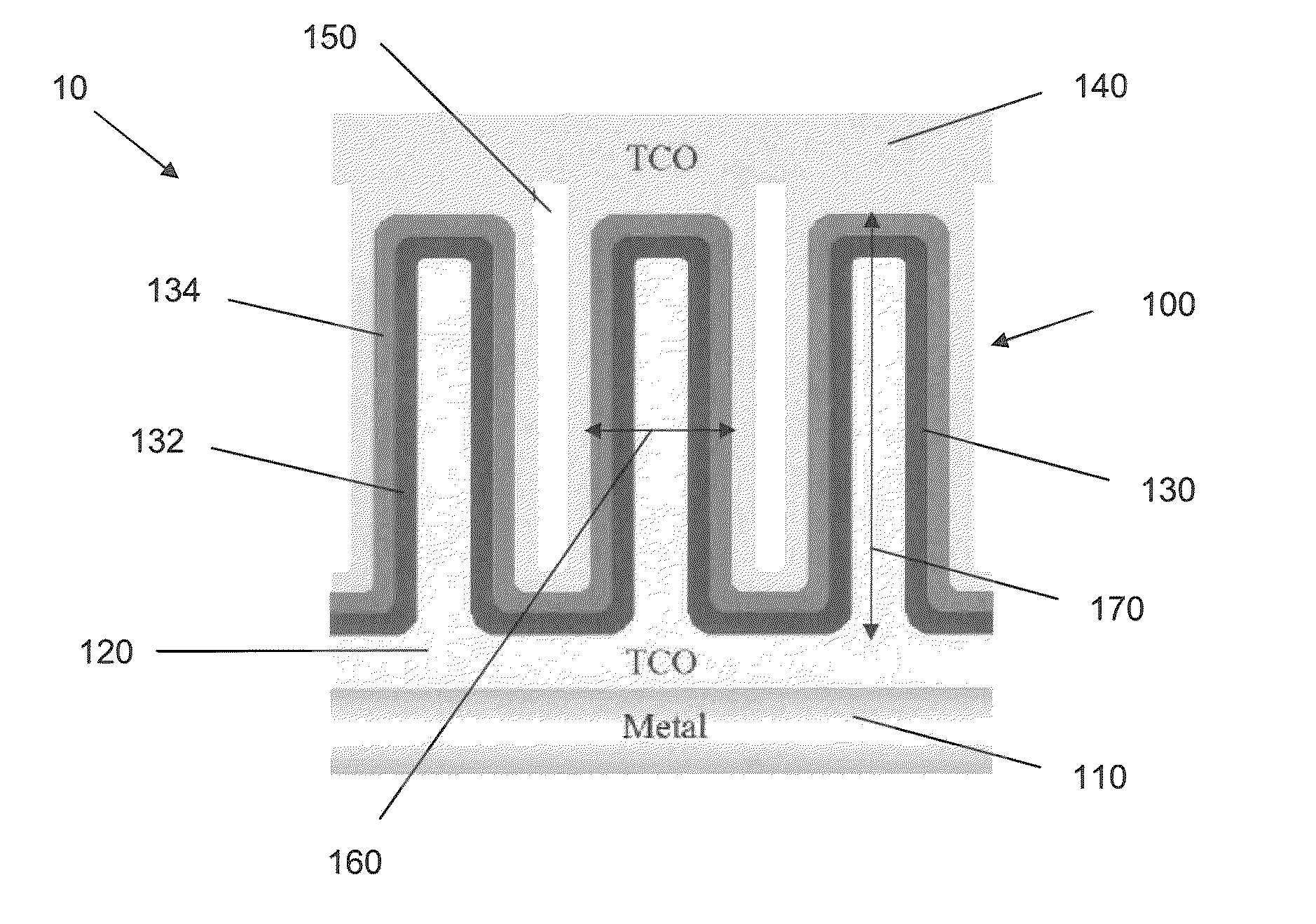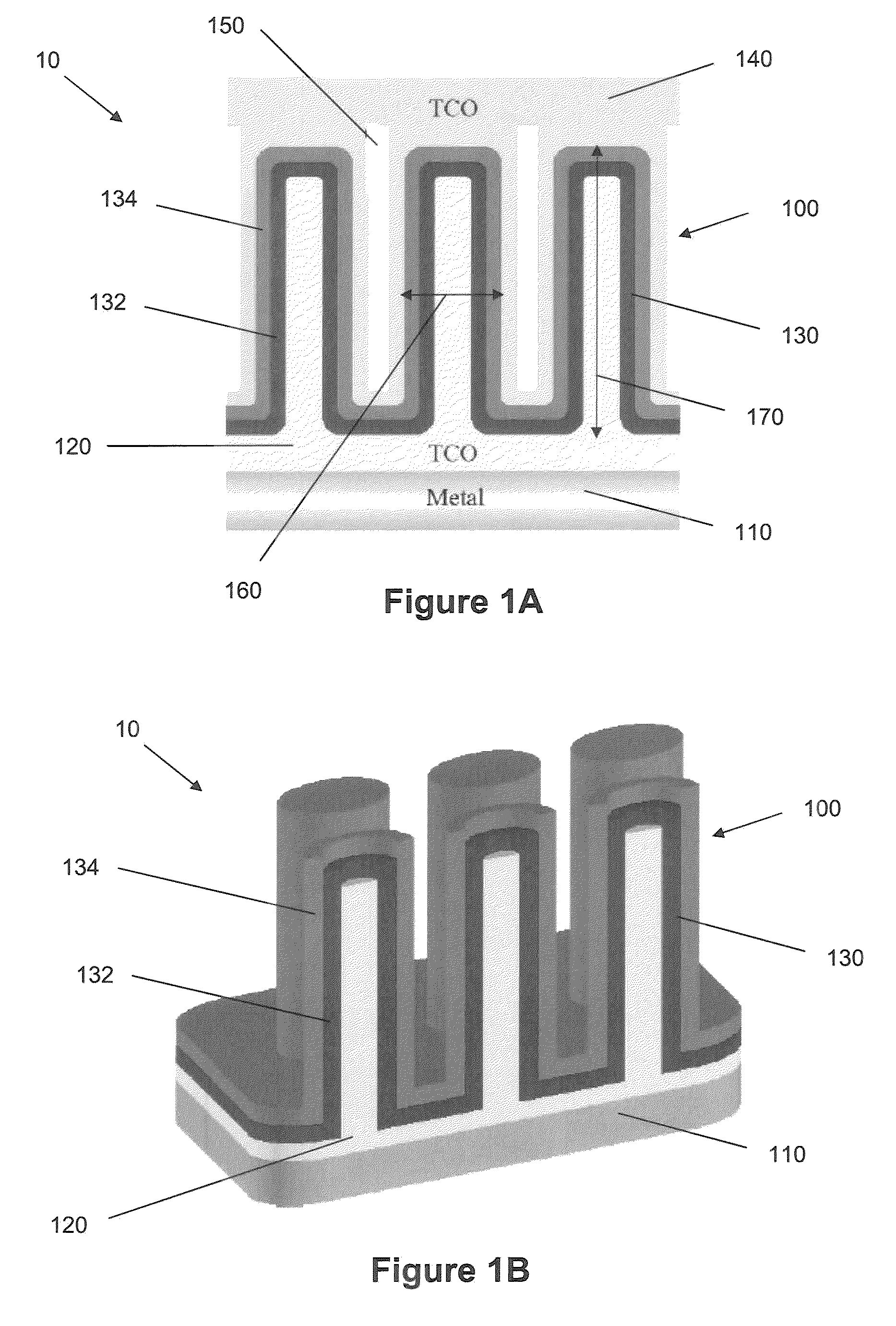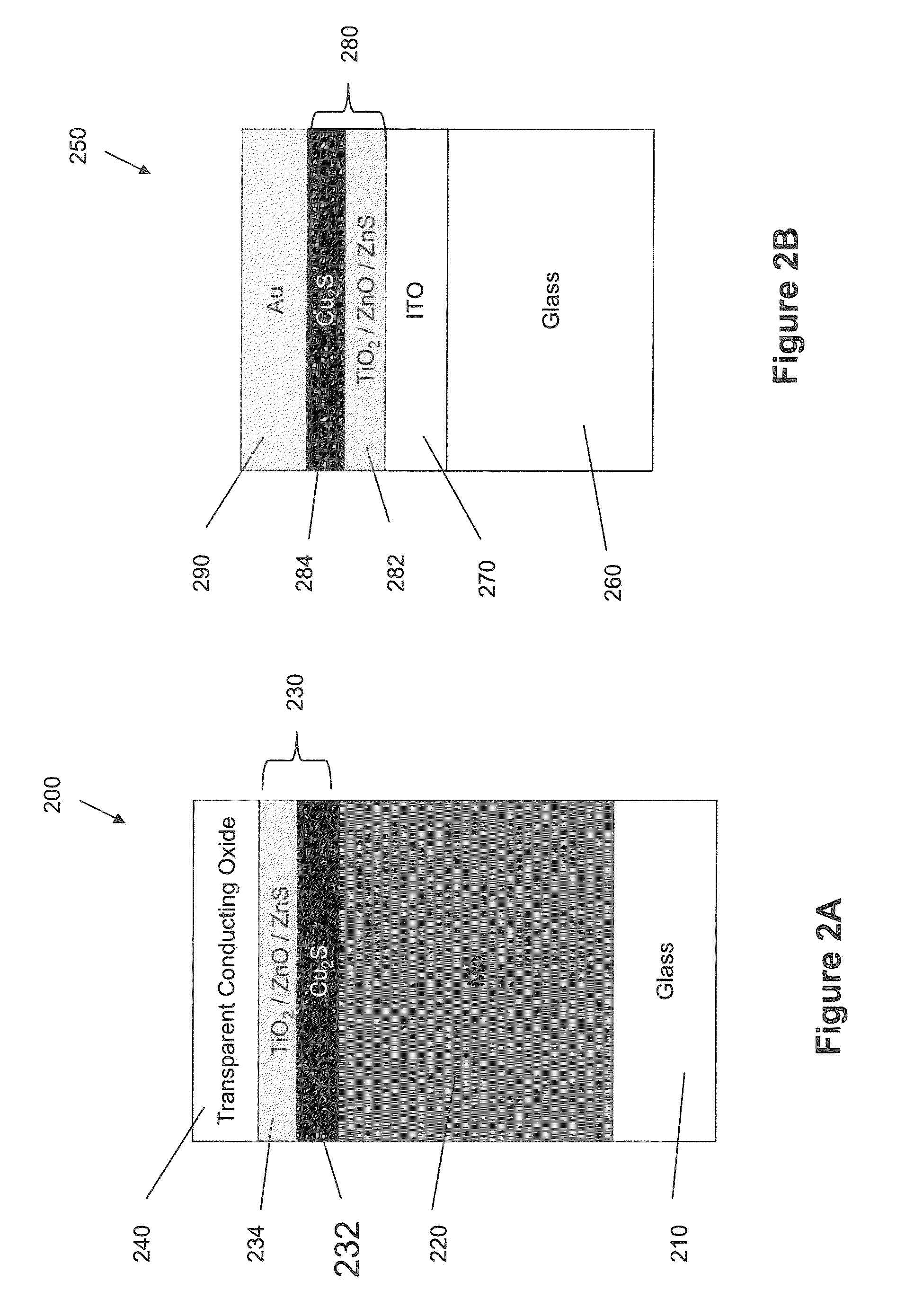Atomic layer deposition of metal sulfide thin films using non-halogenated precursors
a metal sulfide and non-halogenated technology, applied in chemical vapor deposition coatings, coatings, semiconductor devices, etc., can solve the problems of limiting the useful thickness of the active layer, reducing the incongruity of the true gas phase chemical vapor deposition route to high-quality chalcocite films, and reducing the length. , to achieve the effect of efficient charge collection
- Summary
- Abstract
- Description
- Claims
- Application Information
AI Technical Summary
Benefits of technology
Problems solved by technology
Method used
Image
Examples
example 1
[0039]In a particular embodiment, a Cu2S film was formed on a substrate by ALD using alternating exposures of a first precursor of [Cu(sBu-amd)]2 (Strem, 99%) and a second precursor H2S (Sigma-Alrich, ≧99.5%). The Cu2S films were deposited on 1×2 cm Si(100) and 2×2 cm fused silica substrates. Prior to loading, the substrates were ultrasonically cleaned in acetone and then isopropanol and blown dry using nitrogen. Prior to the Cu2S ALD, the substrates were first coated with 2 nm ALD Al2O3. The [Cu(sBu-amd)]2 first precursor vapor was delivered by 200 sccm nitrogen flow through a bubbler held at 110° C. while the H2S second precursor was stepped down to ˜10 Torr through a regulator. [Caution: H2S is a highly explosive and toxic gas.] A nitrogen purge gas was used after the first and the second precursor exposures. Ultrahigh purity nitrogen carrier gas continuously passes through the flow tube at a mass flow rate of 300 sccm and a pressure of 1 Torr. The process may be carried out a re...
PUM
| Property | Measurement | Unit |
|---|---|---|
| thickness | aaaaa | aaaaa |
| diffusion length | aaaaa | aaaaa |
| aspect ratio | aaaaa | aaaaa |
Abstract
Description
Claims
Application Information
 Login to View More
Login to View More - R&D
- Intellectual Property
- Life Sciences
- Materials
- Tech Scout
- Unparalleled Data Quality
- Higher Quality Content
- 60% Fewer Hallucinations
Browse by: Latest US Patents, China's latest patents, Technical Efficacy Thesaurus, Application Domain, Technology Topic, Popular Technical Reports.
© 2025 PatSnap. All rights reserved.Legal|Privacy policy|Modern Slavery Act Transparency Statement|Sitemap|About US| Contact US: help@patsnap.com



